Well, technically, you could choose just about any ecommerce framework, since the majority of them are rather inexpensive as it is.
However, the open source model has brought about all sorts of praise from the people who use it, especially considering these online store systems are completely free, they're managed and developed by numerous people around the world, and you can typically find lots of documentation and blog posts to guide you along your way.
When researching and choosing any of these ecommerce frameworks, it's important to decide the type of development experience you're looking for.
What are the 20 Best Open Source and Free Ecommerce Platforms in 2023?
It's entirely up to you to decide which type of platform is right for you, but for now, let's talk about the best free and open source ecommerce platforms on the market.
1. Square Online – Best Overall Free Ecommerce Platform
If you’re not particularly eager to join the Wix premium plan bandwagon, you might want to try out Square Online.
Now, for a long time, Square had fundamentally existed as a versatile payment solution. Until it finally decided to spread its wings by setting up a multi-faceted business ecosystem. You can read our full Square Online review.
So far, quite a number of people are aware that Square increasingly facilitates merchants dealing with physical businesses restaurants, coffee shops, and so forth. While that’s fairly accurate, it turns out that Square has now grown to be much more than that.
In essence, the platform offers a myriad of extensive features plus integrations that not only support brick and mortar businesses, but also ecommerce websites.
And no, we’re not only talking about digital payments here. But rather, the entire ecommerce framework. Square offers tools for pretty much all the critical online store functions- from inventory management and sales, to marketing and team coordination.
All things considered, the most outstanding feature here is the ability to set up a fully-functional ecommerce website for free.
You don’t need to pay anything to build an online store. Not even for hosting. In fact, you can proceed without the slightest bit of knowledge about coding.
Creating free ecommerce websites with Square is as easy as 1-2-3. After you select an ideal theme from the array of predesigned customizable options, just make some tweaks, and voila!
Ultimately, you’ll achieve the full online store experience. And in case the default features happen to be inadequate, you can leverage Square’s integrations to link your free ecommerce website with third-party apps for booking and scheduling, employee and inventory management, accounting, plus much more.
But that’s not all. If you have some coding tricks up your sleeve, you can consider capitalizing on the Square Connect API to build your own specialized integrations. Otherwise, it’s also possible to link free ecommerce sites with their corresponding offline brick and mortar counterparts. This feature alone is particularly handy for streamlined multi-store selling and product management.
That said, I can guess what you might be wondering at this point. How the heck does Square generate revenue from this?
Well, interestingly, there are no ecommerce web monthly plans on this platform. Not even one. Instead, it basically charges a fixed rate of 2.9% plus 30¢ for each online transaction. Therefore, ecommerce sites are genuinely free on a permanent basis.
2. Wix Ecommerce
I bet you’ve heard about it already. Wix is undoubtedly one of the most renowned cloud-based online store builders. You can check out our detailed Wix review.
Although the bulk its packages are premium, it turns out Wix also offers an extra option that you can take advantage of to set up an attractive free website.
The best thing about this specific platform is this- even free users can take advantage of its intuitive drag-and-drop website builder to design an entire site without coding. As a matter of fact, you should be able to complete a basic free website within a couple of minutes.
The free plan is particularly ideal for beginners who need powerful tools for building and hosting a standard business website. It grants access to a wide array of customizable predesigned templates plus supplementary icons, clip arts, and images.
Then you know what? You also get to promote your free business site, thanks to the simple SEO and email marketing capabilities that Wix offers at no charge. You can combine that with many other free applications from the Wix App Market to form a dynamic marketing framework.
And in case you’re worried about space, you should rest easy because it’ll probably take you quite some time to exhaust 500MBs of free site storage. The corresponding bandwidth, on the other hand, extends to 1GB on a domain that rides on the Wix platform. In other words, your free domain name will be something like username.wixsite.com/site address.
But, here’s the thing. You still get secure web hosting, 24/7 unlimited support, plus automatic mobile optimization. So, of course, your visitors will be able to surf conveniently from any device.
Unfortunately, Wix will bombard your free website with ads. The only way you can avoid that is upgrading to one of the premium plans, which start at $4.50 a month. And that comes with a host of advanced features like form builder, custom favicons, email campaigns, etc.
That said, real ecommerce website tools are not accessible until you subscribe to the Wix eCommerce plan for $16.50 a month. And if you need superior online selling functionalities, you can scale further and settle for the VIP plan at $24.50 a month. This specific one is essentially optimized for growing ecommerce sites.
3. Ecwid
Ecwid essentially translates to “ecommerce widgets”. And just like the name suggests, this is not a distinctive ecommerce platform. Check out the detailed Ecwid review.
Instead, it’s a shopping cart that you can integrate with any site to transform it into a fully-fledged online store. However, as you might have guessed already, you need some lines of code to achieve that.
While Ecwid offers three paid packages, it also provides a free option- which, unlike Jimdo, comes with decent ecommerce capabilities. Apart from unlimited bandwidth, you get a mobile responsive design, two product categories, and support for 10 items.
Sadly, you won’t be able to sell digital products at that level. Plus, your online store functionalities will be limited to a one-page ecommerce website. The only way to escape from that, of course, is subscribing to one of the premium plans, which start at $15 per month.
4. WooCommerce (On WordPress) – Best Open Source Ecommerce Platform
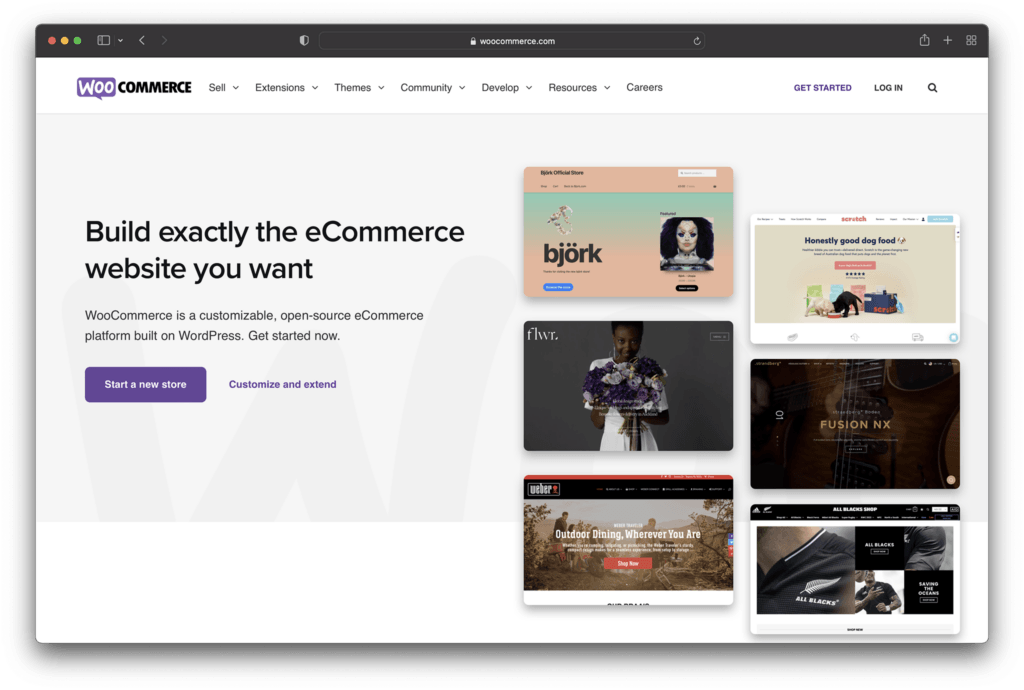 WooCommerce (read our review here) is a WordPress plugin, so you'll have to install WordPress (open source) on your host, then install the WooCommerce plugin onto your site.
WooCommerce (read our review here) is a WordPress plugin, so you'll have to install WordPress (open source) on your host, then install the WooCommerce plugin onto your site.
You simply just:
- Log into your WordPress site.
- Go to: Plugins > Add New.
- Search for ‘WooCommerce’.
- Select Install Now.
- Select Activate Now and you’re ready for the WooCommerce Wizard!
It automatically turns any WordPress website into a fully functional online store, with inventory management, coupons, and product pages.
5. CS-Cart Multi-Vendor
Well, if you haven’t read our CS-Cart review yet, here’s the gist of it- CS-Cart is a renowned Russian software company that has served ecommerce merchants since 2005.
Now, I’ve purposely left out the “Multi-Vendor” part because the company happens to distribute two different CS-Cart ecommerce applications.
For starters, there’s the “CS-Cart” platform, which is basically a shopping cart software with the essential features for getting a typical online store up and running.
Then secondly, we have the CS-Cart Multi-Vendor platform, which is also an ecommerce software, but a little bit different compared to its CS-Cart sibling.
You see, CS-Cart Multi-Vendor is not for online merchants seeking to set up ecommerce stores. Rather, it targets the big players (mostly enterprises) that would like to build marketplaces. I’m talking about creating websites like eBay or Etsy, which usually host numerous merchants under one roof.
So, in short, CS-Cart Multi-Vendor can help you build your own marketplace, complete with the corresponding features that small merchants might need to create their storefronts on your website.
The solution itself is self-hosted and comes with an open-source framework, which features over 500 ecommerce functionalities, as well as themes, and extra integrations.
The problem is, however, that CS-Cart Multi-Vendor is not entirely free. In fact, there’s nothing much you’ll be getting for free. The far CS-Cart Multi-Vendor goes is offering you a 15-day free trial, followed by a 30-day risk-free purchase period. That means they’ll refund all your money if you don’t like their software product.
Now, on the bright side, you won’t be paying for the service on a monthly basis. CS-Cart Mult-Vendor is provided at a one-off cost of either $1,450, $3,500, or $7,500. What you pay, in the end, depends on the features you’re looking for.
But, if you ask me, it’s totally worth the price since it offers everything you can think of. It even comes with its own layout editor, along with great SEO and marketing tools, an in-built content management system, a user-friendly admin panel, a responsive mobile-friendly structure, plus integrations for more than 80 payment and shipping services.
Then considering it’s an open-source application, you can, of course, build your own custom functionalities and integrations. The possibilities here are limitless.
Ultimately, you, as the purchaser, become the head of the marketplace. CS-Cart Multi-Vendor allows you to host vendors, all of whom you’ll coordinate from the primary admin panel.
In other words, the admin panel gives you the power to control everything about the marketplace – from its vendors and their accompanying payouts, to the overall marketplace architecture and design. It’s just like building an online mall from the ground up, and subsequently managing its merchants.
Well, the vendors, on the other hand, are required to register like they would on any other marketplace platform. Then once you approve their details, they can proceed to set up their own marketplace storefronts.
The storefronts themselves can sell different types of products and services. Both physical and digital products are allowed here. So, in the end, it all depends on what you choose to have your vendors dealing in.
That said, CS-Cart Multi-Vendors will give your vendors their own admin panels for managing their stores, as well as configuring features such as product categories, filters, search, shipping options, etc. Then in the meantime, you can have them pay via a monthly subscription schedule, sales commissions, or possibly both. The choice is yours, so be wise about it.
Otherwise, you can find out all the juicy details about CS-Cart Multi-Vendor from our comprehensive review here.
6. PrestaShop – Best Open Source Ecommerce Platform for Startups
 PrestaShop is somewhat new in the ecommerce platform game, but it's made a name for itself with its ease of use and the beautiful interface it provides. Another thing to consider is that it doesn't take much experience to install the plugin and get started on building your store.
PrestaShop is somewhat new in the ecommerce platform game, but it's made a name for itself with its ease of use and the beautiful interface it provides. Another thing to consider is that it doesn't take much experience to install the plugin and get started on building your store.
Therefore, small start-up businesses will find it pretty easy to get started.
7. Medusa
Medusa calls itself the “open source Shopify Alternative.”
Medusa allows you to create a headless eCommerce store. For the uninitiated, ‘headless eCommerce' just means that it doesn’t matter where you run your site on the web; you can add store and product features anywhere you have access to the source code.
You can start easily with a fully functional storefront and admin and simply edit a few lines of code to customize and add integrations. However, depending on your coding know-how, Medusa can be extended endlessly.
Medusa’s architecture focuses on the backend, which exposes its REST API. In contrast, the front-end consists of two types of storefronts you can use, one built with Gatsby.js and one with Next.js to provide a slick store design.
Finally, you also have access to an admin dashboard that connects with your website's backend. From here, you can manage your products, orders, customers, and website settings.
Medusa comes with plenty of in-built eCommerce features. For instance, you can create product variants, discounts, gift cards, sell products in multiple currencies, etc.
There are three front-end starters explicitly designed to help you get up and running quicker:
- The production-ready starter: This comes with product collections, product pages, customer authentication, and checkouts.
- The simple starter template: This is great if you want to start something from scratch.
- Medusa’s Express template: This enables you to sell products via a simple URL link.
Medusa integrates with 13 platforms, including Slack, MailChimp, Stripe, Shopify, PayPal, Contentful, and more.
Benefits of Medusa
- Medusa is incredibly lightweight and fast. So, if performance is a concern, Medusa is a great choice.
- It's highly customizable with full access to the source code. You can also use whichever programming language you prefer to program the front-end.
- Medusa is easier to use than some of the other open-source alternatives. You can add your own APIs, create plugins, and add integrations to pad out any missing functionalities you require.
- Set up is quick with just three commands.
- Thorough self-help documentation is available on how to deploy and get started.
- There's an active community to help you navigate the development process.
- Medusa is entirely free to use
Downsides of Medusa
- Medusa is still relatively new, and there aren’t many native plugins and integrations currently available.
- Currently, Medusa doesn’t support multiple languages for stores. It only works with English.
- Medusa’s current storefronts are very simple and come with little functionality. To extend, you'll have to be prepared to flex your development skills.
- Medusa's in-built features are still pretty sparse. To call it a “Shopify Alternative” right now is a little ambitious, as, at the time of writing, it doesn't provide anywhere near as much functionality
8. nopCommerce

nopCommerce is yet another ecommerce platform with a Russian origin. But, unlike CS-Cart Multi-Vendor, it’s a completely free open-source ecommerce platform built for online stores.
Since 2008, nopCommerce has so far attracted over 2.5 million downloads and for good reasons. If you want to join the bandwagon, you can go ahead and acquire the Microsft ASP.NET-based platform directly from its company website. There’s even a one-click install version available for download, and it comes without the source code.
But, if you’re a developer, it goes without saying that the alternative source code version is the best. You can rework it whichever way you want. Otherwise, you could also download the source code from GitHub.
Now, the subsequent setup process shouldn’t take you long, particularly if you choose to proceed with the one-click installer. Large enterprises, however, would probably take longer as they need time for tweaking nopCommerce’s underlying hood.
Whichever route you pick, you’ll ultimately discover the good reasons that have won nopCommerce many users.
Once you have it up and running, you’ll notice that it’s structured to support both beginner merchants and demanding ecommerce experts. In other words, nopCommerce is capable of serving all types of establishments- from startups and small businesses to medium-sized businesses and large enterprises.
Its comprehensive toolset includes a flexible shopping cart (complete with all the corresponding ecommerce features), an administration panel for managing and tracking your online business, as well as a storefront-end for hosting customers.
The default nopCommerce platform also comes with a host of SEO-friendly features to make your online marketing easy. Its product pages, for instance, are well-optimized for SEO URLs and search engine-friendly content.
Moving forward, it turns out nopCommerce doesn’t restrict you to just one online store. It’s flexible enough to support multiple stores across different domains, all of which are managed from one central admin panel. That essentially means it’s perfect for large enterprises handling an extensive portfolio of ecommerce stores.
Interestingly, nopCommerce doesn’t stop there. It goes ahead and offers marketplace integrations that basically transform your store into a virtual online mall- very much like CS-Cart Multi-Vendor. Consequently, all your vendors’ products are displayed collectively, with the subsequent sales proceeds being directed to the respective merchant accounts.
With that, you can find out more about the platform through our detailed nopCommerce review.
9. X-Cart
X-Cart has helped to create over 35,000 online stores, and this has been growing rapidly over the past few years. As with all of these ecommerce platforms on the list, it's free, open source and self-hosted.
X-Cart is often considered one of the fastest open source platforms on the market, and it also has an incredible number of features for you to sink your teeth into. There's also a free trial for the premium plan, which goes for $495 (one-time payment).
10. Solidus
Solidus works a bit differently from the majority of eCommerce solutions on the market. It's a fully customizable open-source eCommerce platform based on the Ruby on Rails framework. It also utilizes headless eCommerce architecture that's regularly maintained by its developer community. For the uninitiated, this just means that your eCommerce website's front-end is separate from its backend.
Unlike other eCommerce solutions that hand you premade designs, web design is left entirely in the hands of your software team. At a basic level, you'll use an API from Solidus's framework to create custom features and designs while also being able to benefit from Soldius's in-built eCommerce functionality. All without affecting the design or user interface with any updates or edits you make.
Solidus's basic eCommerce features focus on product management, payment options, and logistics. This functionality is packed into coding modules that you can import into your site.
For example, you can control your online and physical store inventories using the product module.
Soldius also enables you to organize how products appear on your website and within your database because Solidus provides coding options for both your store's aesthetics and administration. In fact, you can even use Solidus to build your own backend user interface. This is especially useful for designing something specifically for your team and implementing whatever workflows/processes/UX you think would serve your teammates best.
Solidus is extensive in the sense that not only can you create an online store, but it's also a complete management system with payment processing and resources that control:
- Shipping
- Postage
- Transactions
On top of all the modules available, you can also integrate with third-party logistics providers, payment services, and marketing platforms.
There are plenty of free extensions available that are designed and updated by other Solidus community members. However, you can also find official third-party add-ons if you want extra assurances about the integration's validity.
11. Magento Open Source – Most Popular Open Source Ecommerce Platform
Magento (read our review here) is one of the most popular open source ecommerce platforms, and for good reason.
To start, it has more features than you can ever expect to use. However, this opens up all sorts of avenues when it comes to marketing to your customers and creating things like membership plans, recurring payments, and discounts.
Do you seek complete control over the design and functionality of the site?
If the answer is a solid yes, consider Magento Open Source. It's very similar to that of WordPress, where the community is strong, you can choose from hundreds of thousands of themes, and there are plenty of extensions to get your hands on.
12. OpenCart
Compared to other open source platforms, OpenCart (read our review here) is actually pretty easy to use and lightweight. It's free and there is a decent community to turn to if you have problems when designing your store.
I recommend it for startups since it doesn't take too much time to customize the website from scratch.
Due to the ease of use, the overall cost of setting up a store typically decreases. For instance, you don't have to pay for a special developer, and the themes aren't expensive.
The lookout and user experience has dramatically improved over the past few years and is much more user-friendly.
13. osCommerce
With osCommerce (read our review here), you have access to a thriving community of developers and users, with a wonderful forum to check out solutions to your problems and talk with other people. Almost 300,000 online stores are made with osCommerce, so you know there are plenty of companies that already find it suitable.
The pricing is obviously a plus since you don't have to pay a dime to launch an online store. I would also give it top marks for the features, online support, and ease of use.
14. JigoShop
JigoShop (read our review here) often gets compared to WooCommerce because of its ease of use and clean interface. You can also expand the functionality of the site with a wide range of plugins and add-ons, making your website far easier to scale up.
Overall, the development of JigoShop has improved over the years, so you'll find that JigoShop is pretty easy to pick up, even as a beginner. You'll find a basic dashboard, incredible themes (which are better than most themes from other platforms,) and a speedy interface when adding anything from products to promotions.
15. Drupal Commerce
Drupal is one of the most common options to go with when designing any kind of website. It's one of the close competitors of WordPress since a strong percentage of the internet is powered by Drupal.
Not to mention, you can make pretty much any type of website with it.
As for Drupal Commerce, this is a separate module that allows you to build your ecommerce site rapidly on top of your already existing website, and it's one of the best solutions if you plan on scaling up quickly.
The bonus is there's a huge community of people behind Drupal, so you can turn to the forums, social pages, and blogs for support.
16. WP eCommerce

WP Ecommerce is the overshadowed cousin of WooCommerce. They're not technically related at all, but it's a solid WordPress plugin that doesn't get nearly as much attention as WooCommerce.
Let me tell you how it works. First, you install WordPress on your hosting server, followed by the WP eCommerce plugin.
This transforms a regular WordPress dashboard into an ecommerce control center. So, you can add products, run promotions, create categories, and more.
As simple as that!
Smaller sites will be fine with the plugin, but you have to install paid add-ons for extra functionality.
17. Spree Commerce
Spree Commerce is an open source eCommerce solution that’s completely free to use. This makes it a popular choice among business owners worldwide. The modular platform ensures that business leaders have a flexible CMS to grow a business with.
With spree, you can configure, add, or replace any of the functionality you need to your site. This means that you’re not stuck with a one-size-fits-all store. You get the solution you want – exactly the way you want. Unfortunately, there’s a bit of a problem here. Unlike other products, such as Virtuemart, Spree requires a bit of technical knowledge.
The system needs to be installed and hosted on a manual basis. This means that you might need to hire a dedicated team to handle their storefront for them. Spree commerce might be one of the most functional solutions on the market. However, it comes with a massive learning curve to prepare for.
Spree Commerce is most likely to be the better e-commerce business solution for you, if you’ve got a lot of experience with coding and web development, or you can hire someone with those skills. Spree has tons of customization options, making it great for companies that want to stand out. However, you also need to learn how to use a lot of functions on your own.
18. Joomla
There are a lot of open source ecommerce software options out there, from Magento Community Edition, to WordPress. Joomla is the most advanced system for user management and use access controls, with support out of the box. Created with flexibility for different kinds of content, Joomla’s modules and components offer more flexibility for displaying content types that are non-standard.
Joomla has multilingual support available for growing global teams, which makes it an excellent choice for a lot of companies that want to expand across the world. There are many tools out there that can’t provide the same kind of flexibility. At the same time, to help your business stand out, Joomla offers a range of templates too.
If you’re looking for a convenient way to make a unique eCommerce website from scratch, then Joomla gives you all the functionality you need. You do need to put a little time and effort into your website with Joomla, however. There are some confusing aspects to overcome.
For instance, there are different categories and article spaces for the content on your website, so before you start creating, you need to create categories that highlight the kind of content you want to create. It’s not too overwhelming, but it’s a more involved process than WordPress, particularly for non-developers.
19. Branchbob

There’s no shortage of options when it comes to finding the best free Ecommerce platform these days. From better-known tools like Ecwid, to new options like Branchbob, there are plenty of ways to start taking credit card payments. The key to success is finding something that works for your team.
Branchbob is a lesser-known ecommerce platform that promises ease of use and simplicity. There’s no monthly fee or transaction fees to worry about. What’s more, the tool is clear, straightforward, and excellent for beginners. Branchbob even performs well when it comes to optimized payment processes and page speed too. Faster page performance means that you can deliver better experiences to your target audience.
Like most eCommerce tools, there’s support for unlimited products, on a platform where you can choose your own design from a range of templates. What’s more, Branchbob aims to be the best ecommerce platform around for both developers and designers. You can access the full source code behind the software to adjust it to your needs. There are even more than 100 APIs to experiment with.
If you’re not certain how to make the most of code, you can always use the Branchbob Experts too. These are professionals that can help with building your site, for a fee.
20. Big Cartel
Big Cartel is not your regular platform for typical ecommerce websites. Rather, it’s optimized for artists and creators.
If you’re one, then here’s the good news. You can use Big Cartel to not only building a specialized free ecommerce site, but also proceed to sell your artworks. Check out the detailed Big Cartel review.
The simple online store features on this platform are particularly suitable for individuals and small businesses that might not be expanding any time soon. And in case you face challenges while setting up your ecommerce website, you can rely on Big Cartel’s onboarding process to guide you accordingly.
Sadly, things might turn out to be disappointing when you start adding products. From the look of things, free ecommerce websites can only sell five products. And to make matters worse, you only get a single image per item.
However, on the bright side, at least you can also sell them on Facebook and in-person. Plus, you can always upgrade to a paid plan when you need additional functionalities. The most basic one supports 25 products at $9.99 per month.
21. Jimdo
Jimdo is another beginner-friendly website builder that happens to offer supplementary ecommerce features. Check out the detailed Jimdo review here.
Right off the bat, you can leverage its Dolphin AI system to create a custom free website in a few minutes. But, if you’d prefer to take charge of the whole process, you can opt for the alternative creator website building mode. It comes with additional privileges for editing Jimdo’s predesigned themes.
Unfortunately, you won’t be able to sell anything on your free site. To unlock online store functionalities, you have to subscribe to either the Ecommerce plan for $19 per month, or Unlimited for $39 per month. And each of these paid packages, for your information, are billed on a yearly basis.
Well, if you decide to proceed, you’ll notice that Jimdo’s online store features are seemingly suitable for basic ecommerce websites. Therefore, it’s more of a website builder than an ecommerce platform.
22. Weebly
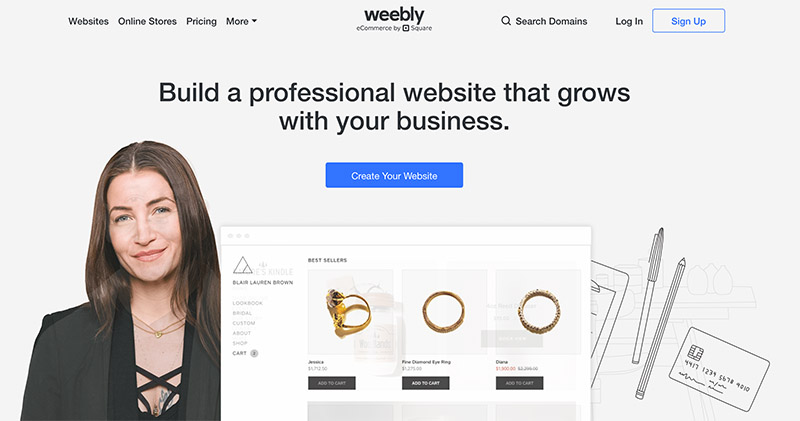
Weebly is one of the most generous tools for payment processing and site building on the marketplace today. Similar to Squarespace and Square Online, Weebly offers a state-of-the-art site building experience that’s great for beginners.
Weebly only recently made ecommerce functionality available as part of its free plan. However, that means that store owners can now unlock all the benefits of Weebly selling without having to spend a fortune. Whether you’re selling physical products and need help with inventory tracking, or you’re selling online services, there’s something for everyone with Weebly.
The biggest downside for business owners using Weebly is that there are a few ecommerce options missing. For instance, it’s hard to figure out how to sell on social media and tracking your stock levels isn’t always easy either.
The good news is that Weebly does come with the ability to add unlimited products and choose from a range of payment options. However, it’s worth noting that those payment methods do come with a significant transaction fee. What’s more, like with many of the other best ecommerce platform options, Weebly doesn’t offer a custom domain with its free plan.
FAQ
Can I build an Ecommerce Website for Free?
Yes, of course you can. Most of these platforms we’ve covered allow users to set up free ecommerce websites with limited functionalities. But, there are a couple of exceptions like Square, for instance, that are generous enough to provide full ecommerce features at no cost.
What’s the Best Platform for Building an Ecommerce Website?
Although there are a number of seemingly dominant options you might have heard about, the ecommerce platform market is quite extensive. There are numerous options offering varying features, and some of them come with tools that have been optimized for specific types of stores.
Needless to say, there’s no ultimate platform for building an ecommerce website. Rather, the suitability of a platform depends on your particular needs.
How Long Does it Take to Build an Ecommerce Website?
Fact is- it might take you five minutes, ten minutes, hours, or even days. It all depends on your skills, the type of online store you’re building, its overall complexity, plus the website building functionalities offered by the platform you choose to leverage.
That said, it’s always advisable to select a platform that combines a user-friendly website editor with dynamic customization features.
A good example is Shopify, which provides favorable functionalities for creating an ecommerce website in less than 15 minutes. You can go ahead and check out our guide to learn the tricks.
Is A Free Ecommerce Platform Right for You?
Again, it all depends on your precise needs and the corresponding ecommerce platform you select.
While the bulk of free ecommerce platforms are only capable of building and running basic online stores, there are still free open-source solutions like Magento and WooCommerce, which can be coded to support complex sites.
Conclusion: Is An Open Source Ecommerce Platform Right for You?
I just want you to know that there are many other open source software which I haven't mentioned.
The best part is every single one of these is free and constantly in development. That's a huge plus if you'd like to save a little money in the short term and scale up easily in the long term.
Even though open source ecommerce platforms have their advantages, you should seriously consider a non-open source solution like Shopify, BigCommerce, or Volusion. With these platforms you only pay a small monthly fee, you don't have to maintain your site as much or look for hosting, and always get dedicated customer support.
In my opinion, this type of ecommerce frameworks is for rapidly scaling companies that are going to hire a developer (or a team of developers) to run the entire website. But if you don't have the money for this type of employee, you're better off scaling up with something like Shopify.
If you have any questions about this take on open source ecommerce platforms, let us know in the comments below.
Featured image by Damian Kidd





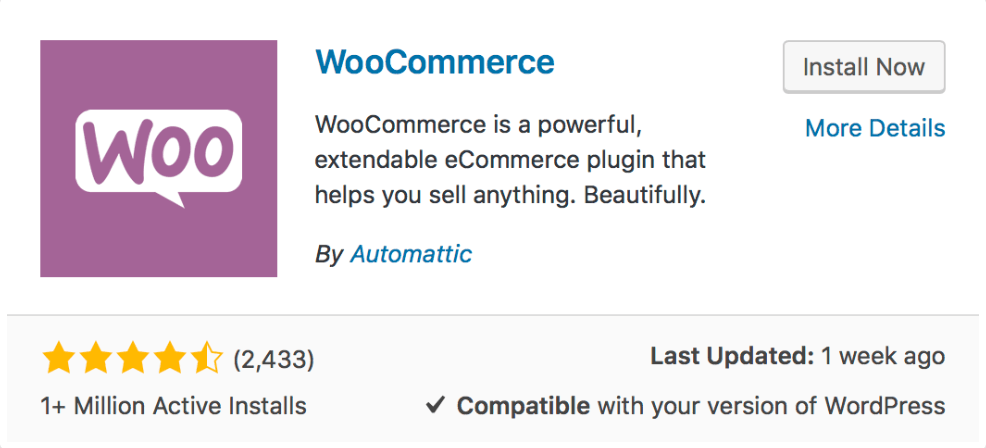





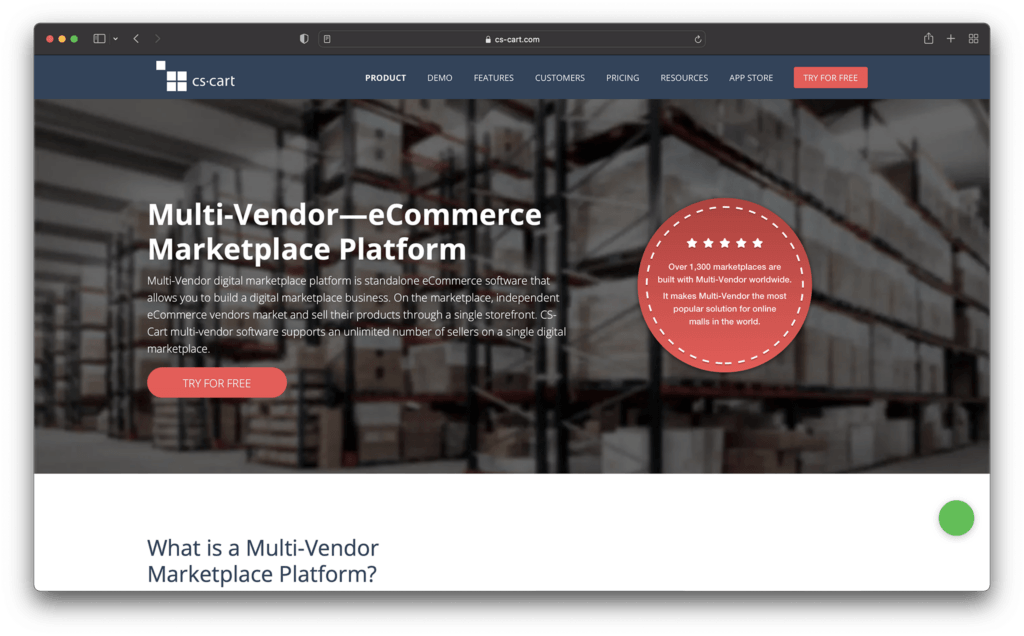



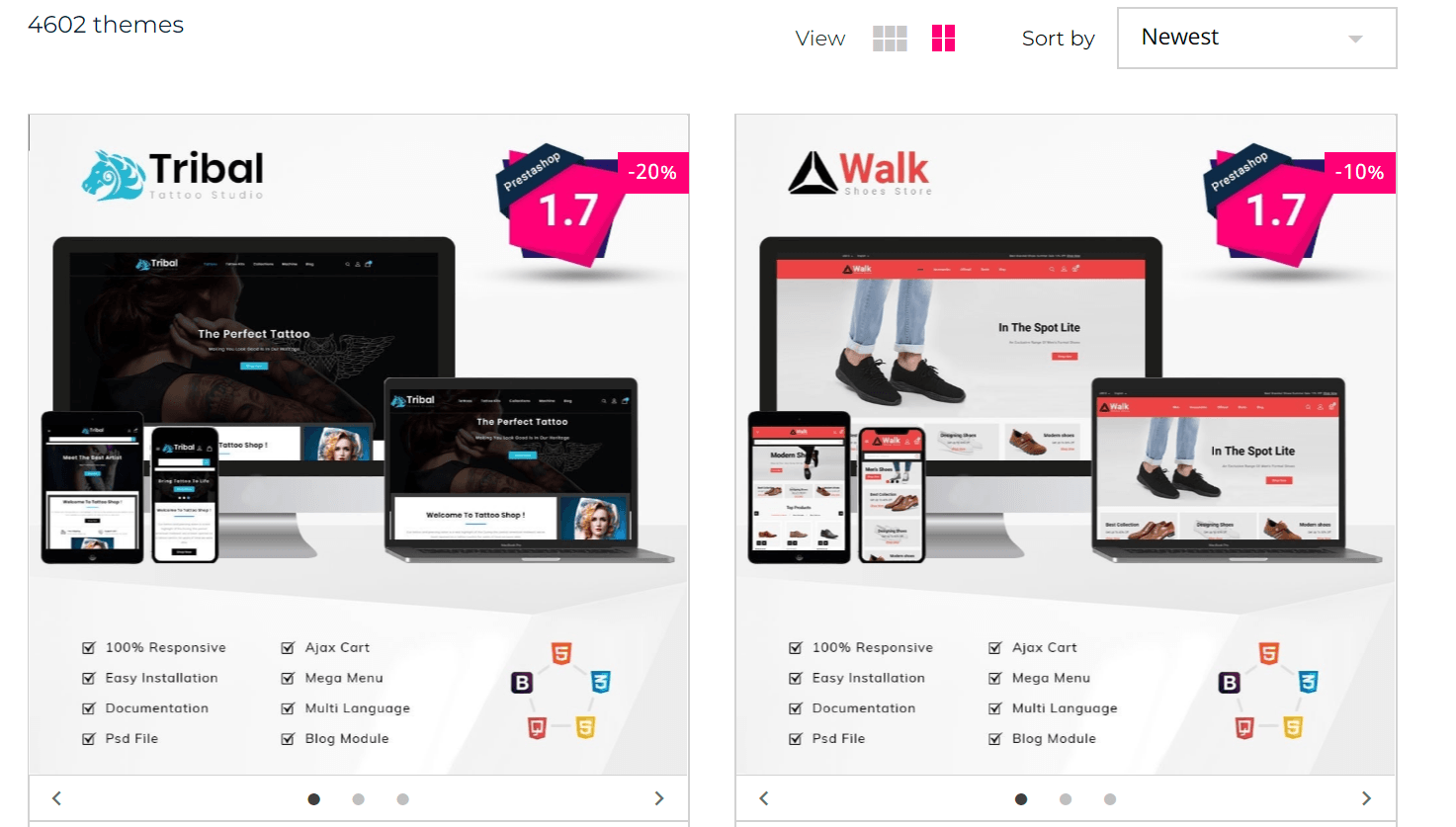




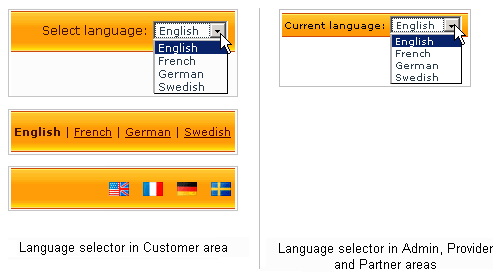


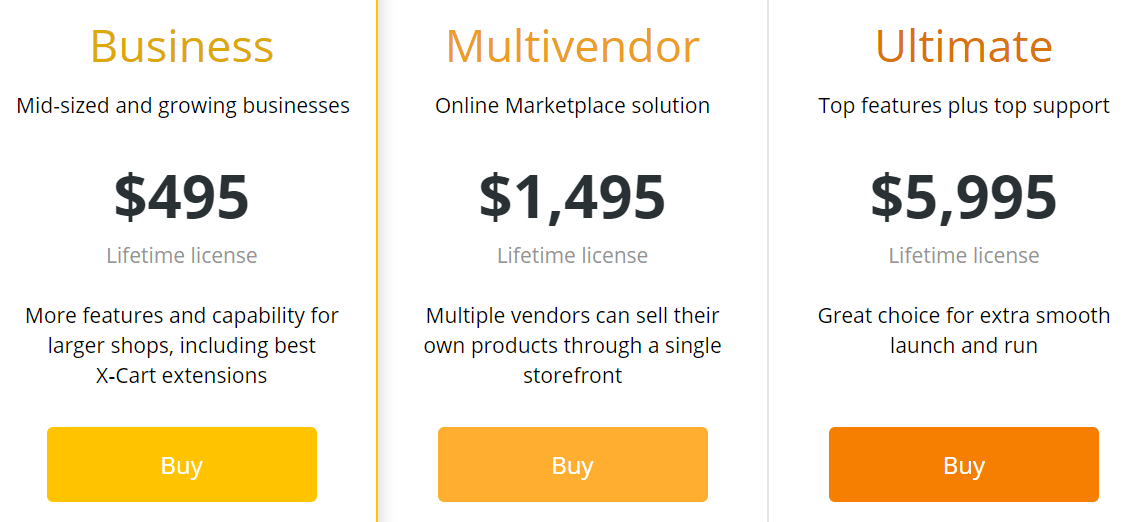

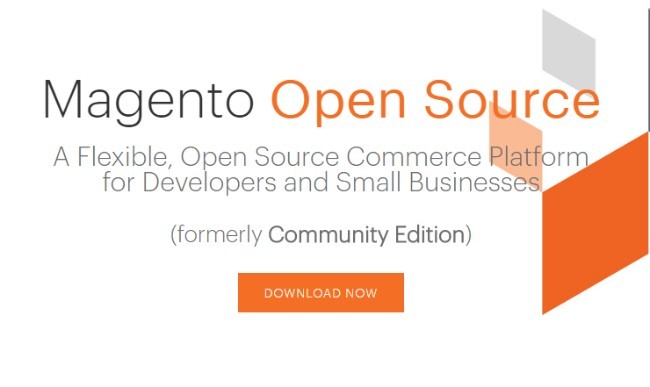




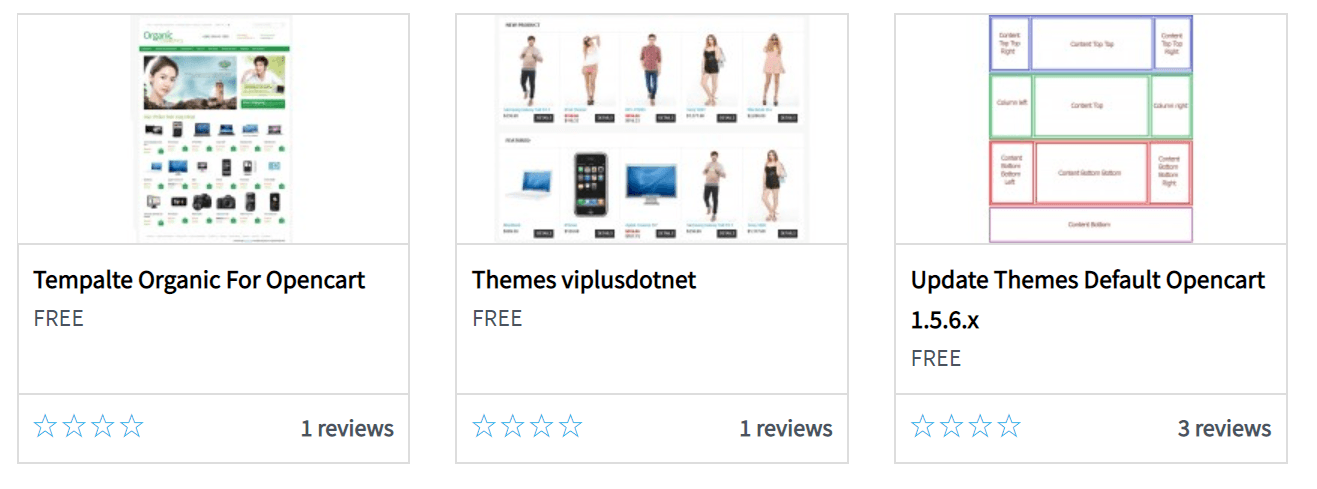



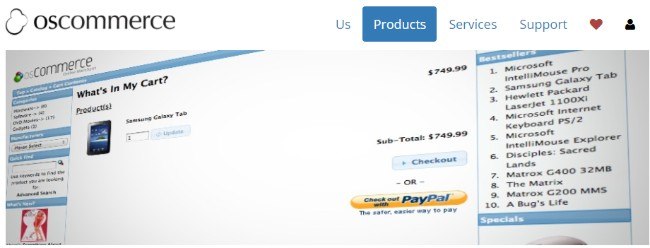







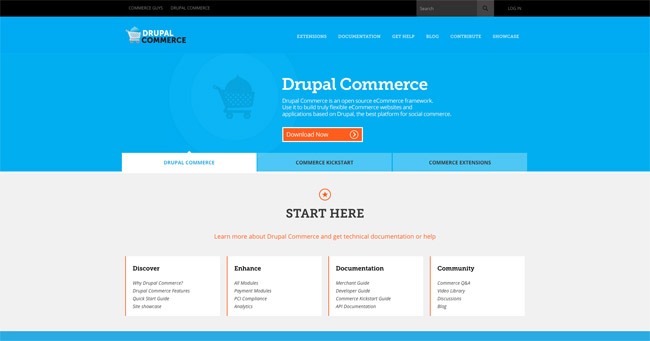















I have a friend who is trying to decide between Shopify and BigCartel. I always thought Shopify was for a more robust operation that has several SKUs, colors of those SKUs, etc. and had better backend accounting tools etc. But for people who are just starting out BigCartel is so much more user friendly in my experience. You mention in the article that Shopify is better to start with….can you clarify why/how over BigCartel??
Hello Noelle, for more info, you can check out our Shopify vs Big Cartel comparison.
I’m wondering if one of these options works better for the type of product that is being sold? I did see that one was geared toward artists ( that’s great). Can you advise if one might be a good fit for Vintage?
What about for subscription boxes? I thought I should ask. The info you have provided has been so helpful. Thank you for your time and your articulate guide on this topic.
Hello Alison, usually what works for artists works for vintage products as well 🙂
I used osCommerce years ago and it was a big pain customizing themes and constant file edits for fixes and updates. I spent more time editing files than adding items to sell. With all the code updates LOT’s of add-ons broke. I see a new version is due this year (2021) but I wouldn’t even try it after all the years I struggled with previous versions.
I was looking for a free eCommerce platform, I never thought these many options are available. Great insight. Thanks for sharing.
You’re welcome Anil!
Congratulations for the article! Detailing all the pros and cons of each platform can help you make the right choice.
Thanks! 👍👍👍
Hi,
great info but unless I am missing something, Shopify costs 25 dollar per month, after a two week free trial period. Big difference with 9 dollar per month! Would be a good thing to correct. Thank you for the great article!
Hello Michael, the Shopify Lite plan is is also availble for $9 per month.
You have written a great article but I don’t see Shopify or BigCommerce in the list is it because they are SaaS Platforms and not Open Source?
Yes, it’s because Shopify and BigCommerce are not on this list because they are not open source and they do not have a free plan either.
Wow I have read a LOT of articles the past month looking for a site to go with and this is the best one. I love how you broke down each platform with the pros and cons because honestly after reading so many websites reviews of dozens of ecommerce platforms my brain is overloaded. Do you have one of these posts breaking down all of the non-open source ecommerce sites? I will poke around and see I just happened upon this post in a Google search. 🙂
Hello Staci,
Here it is: 6 of the Best Ecommerce Platforms and Solutions 2019 😉
Your blog is very nice… I got more information about your blog page… Thanks for sharing your information…
Thanks Alex!
Hey,
I don’t see Spree Commerce here and it’s a significant player in the open source e-commerce world!
Thanks for your suggestion Anna!
We’ll take this into consideration, in the meantime you can check out our full SpreeCommerce review here.
I would not suggest Zencart and Oscommerce to be in top 11 anymore.
We have not had a single customer for these performs in a couple of years.
You are missing Abantecart
This may be a stupid question, I really don’t know but.. What about WIX? Is it any good for professional or business use? And why is it never listed in any compilations?
Hello Tristan,
Please check out our full Wix review for more info.
–
Bogdan – Editor at staging.ecommerce-platforms.com
Thank you for this great and detailed article. It gave a huge info as an e-commerce searcher to me.
Glad we could help Mad!
–
Bogdan – Editor at staging.ecommerce-platforms.com
Thanks for this article.
I love the “benefits” & “downsides” lists which are helpful, though not as much as could have been.
I really wish you would have mentioned what versions of all the software you reviewed here, because it’s an ever changing process. And I know from experience that even 1 or 2 subversions can make a big difference sometimes.
Thanks for the suggestion Matt, will try to add more info about software versions to make the article more clear.
–
Bogdan – Editor at staging.ecommerce-platforms.com